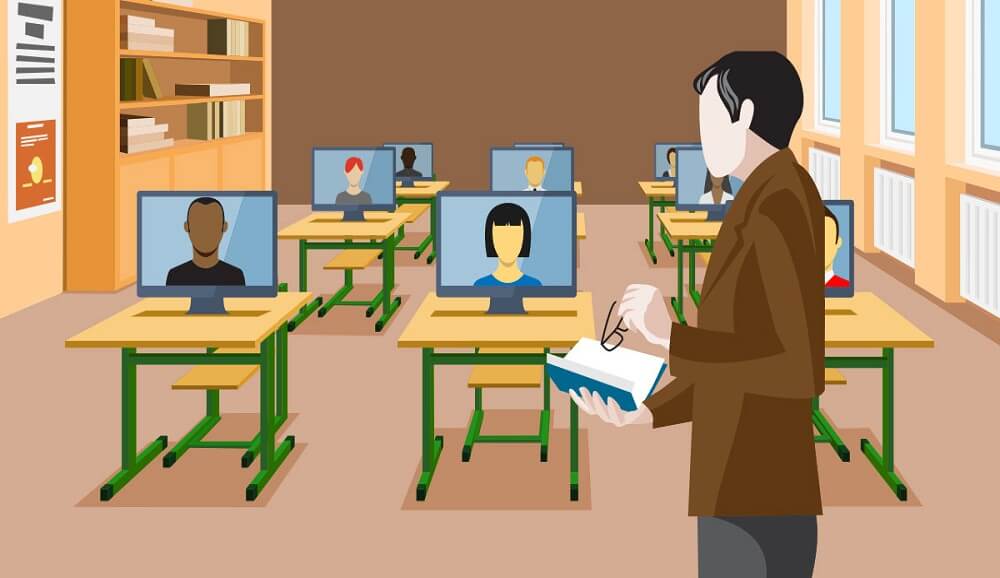The world is currently divided between digital and print. Students now have the choice to either pick up an eBook reader or an actual book. But which one is better? Which one actually leads to in-depth learning? While technology brings convenience, printed books carry the benefit of tangible reading. But printed books are harder to track and technology can often be distracting. And these keep the debate afloat as to which method should triumph over the other. The best schools in Sonipat maintain both a physical and digital library and they naturally have their reasons. Printed versions may have their benefits but technology cannot be ignored totally.
Printed books encompass a tactile experience
Research on human learning has shown that reading involves multiple senses, not just our visual intelligence. The touch of each page, the fragrance of a physical page, all combine to create a tangible reading experience. And once we experience something, we tend to get involved in the situation and retain the material better owing to inputs from multiple senses. Technology, or reading from the screen, involves just the visual sense. A gadget has no fragrance and the touch does not count as we pick up the same gadget for different uses throughout the day.
Technology can be heavily distracting
Since the gadget serves numerous functions, like playing games or searching the internet, or accessing the online library for a mindless scroll, the mind finds it difficult to focus on the text on the screen. There is always a voice that continuously chirps that the game is just a few clicks away. Disturbed focus leads to shallow reading and hence the context is barely retained. Printed books do not have this drawback. The entire copy deals with one topic only and the mind has better focus than reading from a gadget.
Books help with memory mapping
Ask a student where a particular topic is printed in a particular book. If he/she has read a printed copy and retained the content to its depths, the student will be able to name the chapter or the event after which the topic comes or on which part of the page the topic is printed, top or bottom. The top 5 schools in Sonipat try to teach and impart textual knowledge like this, often called memory mapping. It is difficult to memorize chunks of information. But when placed in a sequence, on a physical page, or associated with a bright cover, recalling becomes much easier. Gadgets have disrupted this habit among students. Features like zoom and scroll have taken away the physical association and memory mapping becomes difficult.
But technology is better for fragmented learning
Say a student wants to look up the meaning of a particular word. Or wants a quick review of a specific definition. Finding these in a physical book is cumbersome. It is much easier to write the question in a search engine and get the information quickly. Also, not always do students have to go into the deeper levels of a topic. Surface reading can suffice the current curiosity. Technology is the winner here as skimming a printed book to find specific information is almost herculean. Technology can make students more informed without reading much. At times, this is what is all required.
Technology provides outreach and variation
Technology has opened up the world. For instance, students can now read The New York Times sitting in India and get access to books of Oxford University Press. Getting physical versions of these materials will require hard work. Plus, with technology, reading materials are also available in audio forms and video synopsis that not only enable students who prefer other modes but also benefit students with special needs. Technology has removed international boundaries from the world of knowledge. Today, the best school in Sonipat has subscriptions to all the top reading resources to provide its students with more exposure.
So, does technology help?
Yes, but in moderation. Technology alone cannot turn students into better learners. They need the printed versions to achieve deep learning that ultimately leads to knowledge retention. This is why Swarnprastha Public School is an advocate of both digital and physical books. Its library has an eclectic collection of both printed and electronic materials. SPS encourages its students to pick up a physical book. But it also directs students to use technology for easy reference, creating engagement and accessing international content. Knowledge today has expanded beyond the few pages of any book. Schools need to equip students with the skills to learn from all sources, closely utilizing the perks and keeping away the drawbacks.








